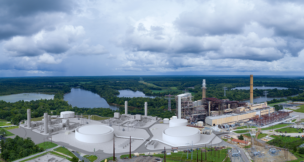
President Donald Trump speaks with reporters as he participates in a ceremonial swearing in of Paul Atkins as chairman of the Securities and Exchange Commission, in the Oval Office of the White House, Tuesday, April 22, 2025, in Washington. (AP Photo/Alex Brandon)

President Donald Trump speaks with reporters as he participates in a ceremonial swearing in of Paul Atkins as chairman of the Securities and Exchange Commission, in the Oval Office of the White House, Tuesday, April 22, 2025, in Washington. (AP Photo/Alex Brandon)
Trump’s tariffs echo Hoover-era economic missteps
Richard Foster //April 30, 2025//
In a January 2024 interview on a MAGA-friendly online platform run by MyPillow CEO Mike Lindell, President Donald Trump said he thought the U.S. economy was headed for a crash, adding that he hoped it wouldn’t happen during his then-hypothetical second term.
“When there’s a crash, I hope it’s going to be during this next 12 months because I don’t want to be Herbert Hoover,” Trump said. “The one president I just don’t want to be [is] Herbert Hoover.”
It’s ironic then that Trump’s first 100 days in office could be confused with an historical reenactment of the Hoover administration. In fact, the president seems to be doing everything short of selling T-shirts and posters of himself decked out in Hoover cosplay.
First, a brief history lesson: Following the 1929 stock market crash and with the world entering the Great Depression, Republican Hoover signed the Smoot-Hawley Tariff Act into law in 1930. The GOP legislators who brought forward the protectionist trade law hoped it would boost U.S. manufacturing, but economists and the nation’s business leaders vehemently protested, saying it would bring disaster.
While the trade war initially sparked boosts in domestic production and employment, it ultimately resulted in plummeting exports and employment levels. Other nations either responded with retaliatory tariffs or found alternatives to American goods. The world economy worsened, and Smoot-Hawley has generally been cited as a contributing factor to what made the Great Depression so great.
Now, fast-forward to today: As of early April, Trump’s brief 2025 trade war, with its whipsawing, on-again, off-again tariffs, resulted in the stock market losing about $11.1 trillion in value in just under three months.
Trump has cited various reasons for his trade war, including wanting to bring manufacturing back to America, fixing trade imbalances and responding to other nations’ tariffs on U.S. exports. (He’s also contradicted himself about whether the tariffs are meant to be a negotiating tactic.) None of these are bad goals on their face, but none can also be solved overnight without causing economic chaos.

On April 2, which he dubbed Liberation Day, Trump unveiled a fierce slate of virtually worldwide tariff hikes, sending the market into a spiral that marked the worst day in trading since 2020. A week later, acknowledging that Americans were getting “a little bit yippy, a little bit afraid” over the trade war’s economic impact, Trump paused most of his reciprocal tariffs for 90 days. But he left in place and ratcheted up tariffs on Chinese goods, some of which now may be as high as 145% to 245%.
During an April 9 Fox Business interview, JPMorgan Chase CEO Jamie Dimon said that the “likely outcome” of Trump’s aggressive tariffs would be an economic recession. And on April 16, Federal Reserve Chair Jerome Powell remarked that Trump’s tariffs exceeded the Fed’s worst-case assumptions, saying the trade war could lead to higher, prolonged inflation and slower economic growth. Powell also signaled that the situation would prevent the Fed from lowering interest rates.
Trump’s response? He complained about interest rates and threatened to fire Powell before the chairman’s term ends.
If only there was some way we could have been warned this might happen. Oh, wait — we were.
The Hill ran a July 16, 2024, editorial titled, “Trump’s tariffs could mirror Hoover’s Depression-era results.” And in October 2024, just ahead of the presidential election, the nonpartisan Tax Foundation think tank published a cautionary essay, “Trump’s Tariff Proposals Would Raise Tariff Rates to Great Depression-Era Levels.” And these were hardly the only voices raising the alarm.
But everyday voters in the 2024 presidential election were largely ignorant about the potential threat and impacts of a trade war, and the business community chose to ignore the issue, preferring to believe that Trump would be more focused in his second term on economic growth and eliminating regulatory hurdles than on waging trade wars and political revenge.
Regardless of your politics, it’s a fact that Trump isn’t interested in preserving the status quo — and that’s a trait for which he’s beloved by his tens of millions of loyal followers.
But he’s also not invested in preserving economic stability, and that’s a problem for business and finance.















